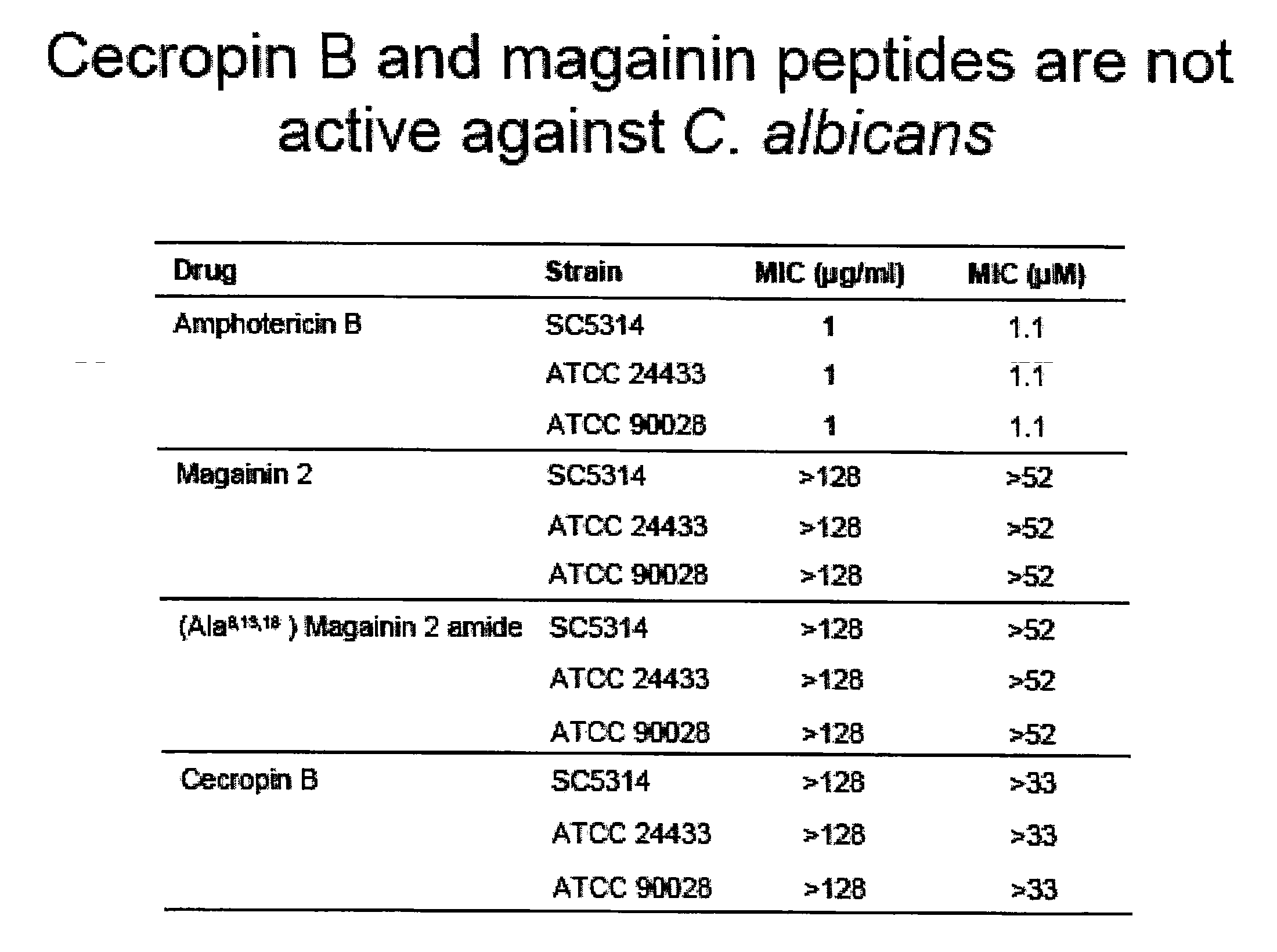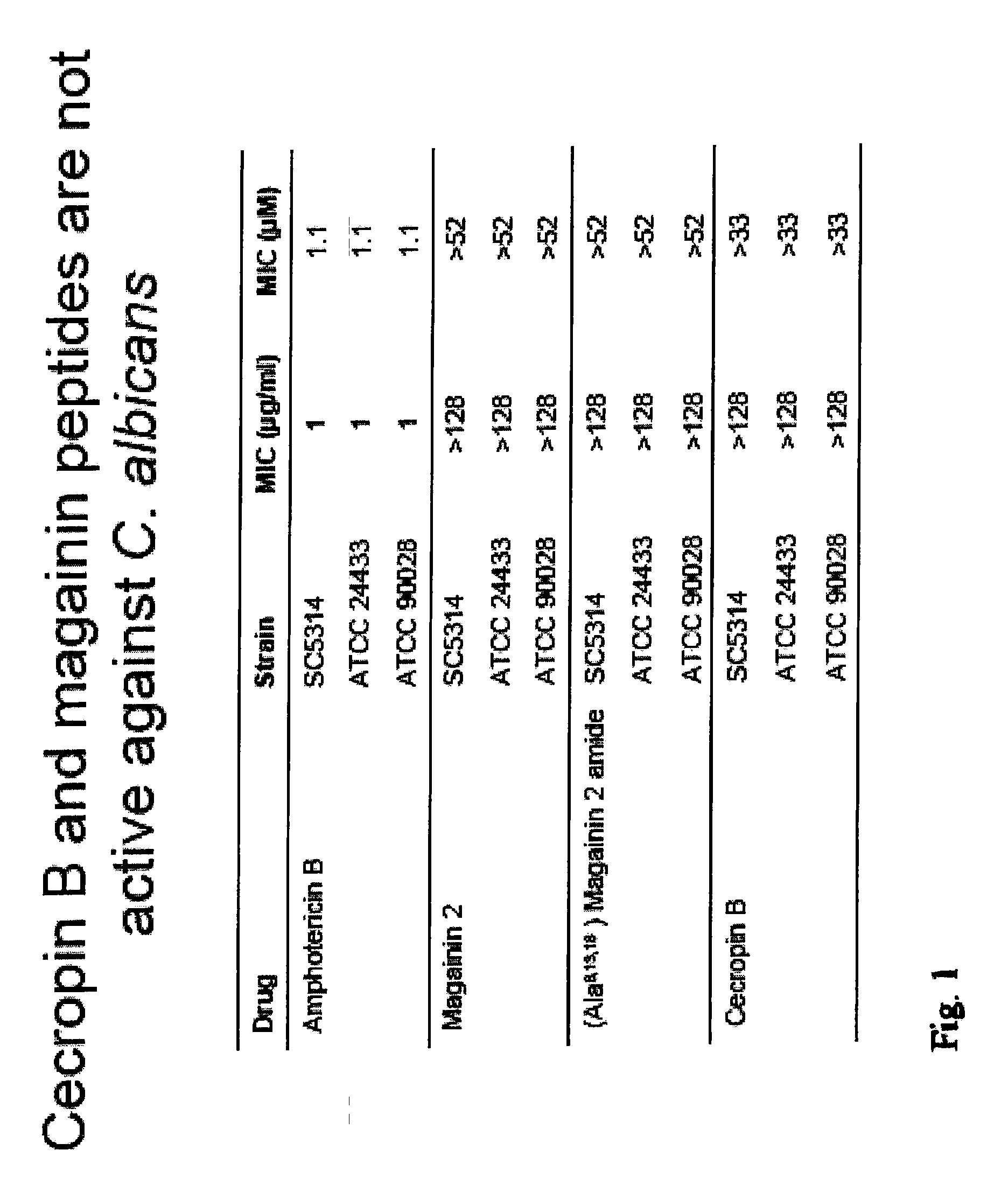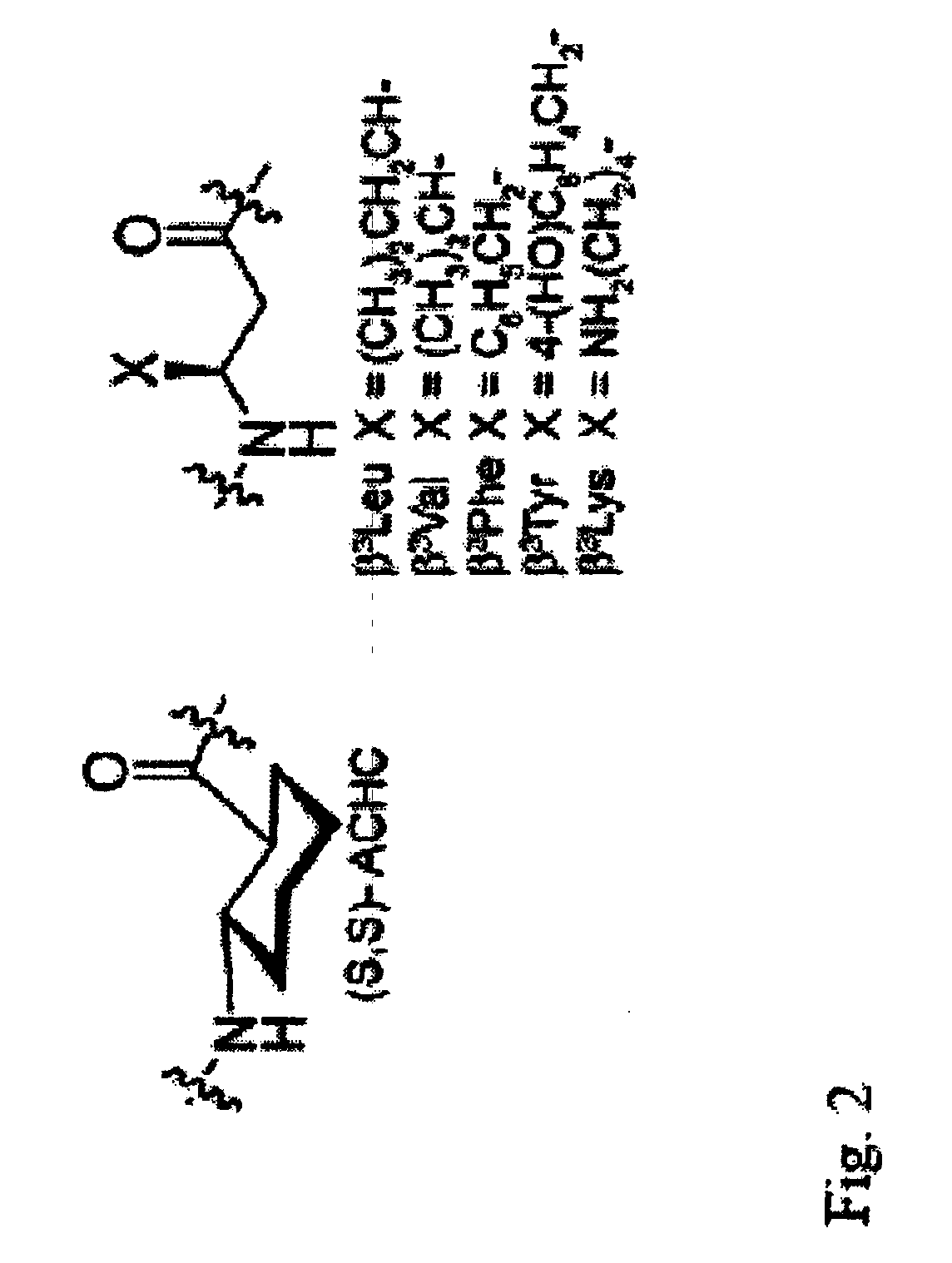Beta-peptides with antifungal activity
a technology of peptides and antifungal activity, which is applied in the direction of peptide/protein ingredients, prosthesis, catheters, etc., can solve the problems of significant and often life-threatening clinical problems, persistent health problems in some patient populations, and profound medical challenges in treating fungal infections
- Summary
- Abstract
- Description
- Claims
- Application Information
AI Technical Summary
Benefits of technology
Problems solved by technology
Method used
Image
Examples
examples
β-Peptide Synthesis
[0122]Materials. Fmoc-(S,S)-trans-2-aminocyclohexanecarboxylic acid was synthesized as described by Schinnerl et al. (Eur. J. Org. Chem. 2003, 721-726). Fmoc-(S)-β3Tyr-OH, Fmoc-(S)-β3Lys(Boc)-OH, Fmoc-(S)-β3Val-OH, Fmoc-(S)-β3Phe-OH, and Fmoc-(S)-β3Leu-OH were prepared as described by Seebach et al. (Helv. Chim. Acta 1996, 79, 913-941). NovaSyn TGR resin (0.25 mmol / g loading) and O-benzo-triazol-1-yl-N,N,N′,N′-tetramethyluronium hexafluorophosphate (HBTU) were purchased from Novabiochem. Methanol, dichloromethane (DCM), and acetonitrile were purchased from Burdick & Jackson. Biotech grade N,N-dimethylformamide (DMF) was purchased from Aldrich and stored over 50W-X8 DOWEX ion-exchange resin, and dry N,N-diidopropylethylamine (DIEA) was distilled from calcium hydride. The remaining reagents were used as purchased from Aldrich.
[0123]β-Peptide preparation. β-Peptides were prepared with Fmoc solid-phase synthesis methods utilizing a microwave reactor (CEM, MARS system)...
PUM
| Property | Measurement | Unit |
|---|---|---|
| structure | aaaaa | aaaaa |
| hydrophobic | aaaaa | aaaaa |
| hydrophobic-hydrophobic | aaaaa | aaaaa |
Abstract
Description
Claims
Application Information
 Login to View More
Login to View More - R&D
- Intellectual Property
- Life Sciences
- Materials
- Tech Scout
- Unparalleled Data Quality
- Higher Quality Content
- 60% Fewer Hallucinations
Browse by: Latest US Patents, China's latest patents, Technical Efficacy Thesaurus, Application Domain, Technology Topic, Popular Technical Reports.
© 2025 PatSnap. All rights reserved.Legal|Privacy policy|Modern Slavery Act Transparency Statement|Sitemap|About US| Contact US: help@patsnap.com



